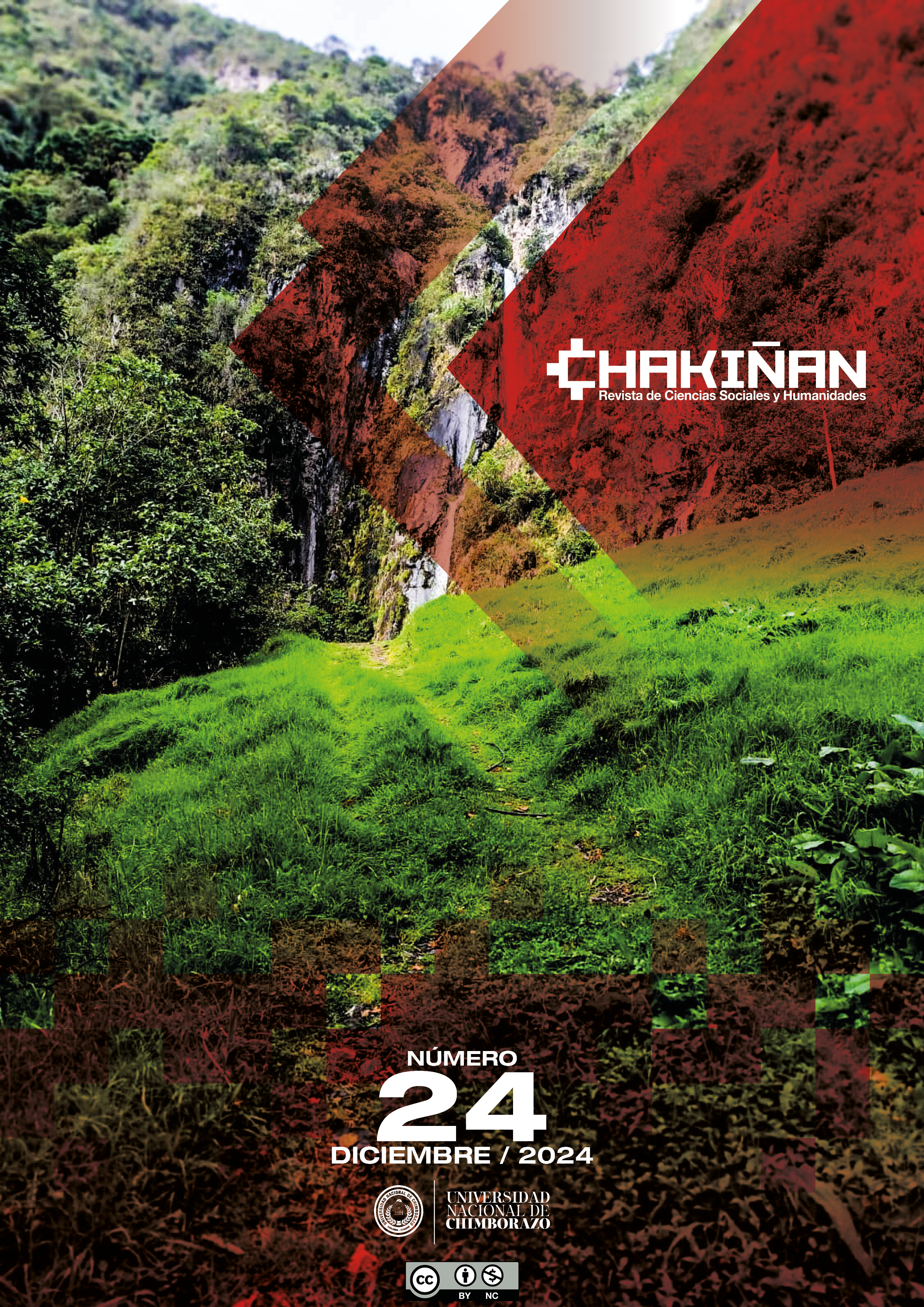CHROMATIC RECORD OF NATURAL TEXTILE FIBERS DYED WITH CHUQUIRAGUA AND LINDEN
Main Article Content
Abstract
The research, which evaluates the sustainability of the practice of textile dyeing with vegetable species, has practical implications for the textile industry. The study was conducted by artisan producers of sheep wool in the community of Apagua, province of Cotopaxi, Ecuador. The main objective was to elaborate a chromatic record of natural textile fibers dyed with the extract of chuquiragua flowers, leaves and stems and the extract of linden stems and leaves; the plant samples were collected in the community mentioned above. A quantitative approach was used, a comparative experimental study that sought to obtain valid reasons; the independent study variables were the dyeing plant species (linden and chuquiragua), and the dependent variables were the type of natural fiber (wool and cotton) and the post-mordant applied (alum, sodium bicarbonate, lemon, salt, and vinegar). As a result, a record of 40 tonal values was obtained, and the potential use for textile dyeing of the species chuquiragua (Chuquirahua jussieui) and linden (Sambucus peruviana) was determined.
Downloads
Article Details
Conference Proceedings Volume
Section

This work is licensed under a Creative Commons Attribution-NonCommercial 4.0 International License.
Responsibility of the authors:
The authors are responsible for the ideas and data collected in the manuscripts. They are additionally accountable for the fidelity of the information, the correction of the citations, the right to publish any material included in the text, and the presentation of the manuscript in the format required by the Journal (WORD template). A manuscript forwarded to CHAKIÑAN must not have been published before, nor must it have been submitted to another means of publication.
Copyright:
Published articles do not necessarily compromise the viewpoint of the CHAKIÑAN JOURNAL. The Journal is aligned to the policy of the licence de Creative Commons Reconocimiento-No comercial 4.0 Internacional (CC BY-NC 4.0). Each author retains the right to the paper published in the Chakiñan journal.
Privacy statement
The personal data and email addresses entered in this magazine will be used exclusively for the purposes stated by the publication and will not be available for any other purpose or person.
How to Cite
Share
References
Álvarez, J., & Arroyo, G. (2017). Teñido de fibras naturales con colorantes naturales. Jóvenes en la Ciencia, 3(2), 2316-2320. https://n9.cl/7l2jp
Bravo, E. (2014). La biodiversidad en el Ecuador. Abya Yala.
De la Torre, L., Navarrete, H., Muriel, P., Macía, J., & Balslev, H. (2008). Enciclopedia de las Plantas Útiles del Ecuador. Herbario QCA de la Escuela de Ciencias Biológicas de la Pontificia Universidad Católica del Ecuador & Herbario AAU del Departamento de Ciencias Biológicas de la Universidad de Aarhus.
Redacción Diario El Universo. (30 de diciembre de 2016). En Apagua los ponchos son tejidos solo a mano. El Universo. https://n9.cl/ueuiz
Hagan, E., & Poulin, J. (2021). Statistics of the early synthetic dye industry. Heritage Science, 9(33). https://doi.org/10.1186/s40494-021-00493-5
Hoces de la Guardia, S., Brugnoli, P., & Jélvez, P. (2011). Registro cromático en textiles de la cultura arica en el período intermedio tardío: caso inkuñas. Boletín del Museo Chileno de Arte Precolombino, 16(1), 67-92. http://dx.doi.org/10.4067/S0718-68942011000100005
Hoces de la Guardia, S., Brugnoli, P., & Sinclaire, C. (2006). Awakhuni: Tejiendo la Historia Andina. Museo Chileno de Arte Precolombino.
Marrone, L. (2015). Tintes naturales. Técnicas ancestrales en un mundo moderno. Editorial Dunke.
Ministerio del Ambiente del Ecuador. (2015). Especies forestales leñosas arbóreas y arbustivas de los bosques montanos del Ecuador. Organización de las Naciones Unidas para la Alimentación y la Agricultura, IT.
Palma, M. (2019). Caracterización de la chuquiragua (Chuquiraga jussieui) con perspectivas agroindustriales [Tesis de Grado, Universidad de Las Américas]. Repositorio institucional. https://n9.cl/13jdw
Papa, E. (2018). Investigación de tintes naturales, aplicado a la lana como fibra natural. Universidad de la República.
Rodríguez, M., & Gamarra, O. &. (2021). Tamizaje fitoquímico y actividad antibacteriana de los extractos de seis plantas medicinales usadas en Amazonas. Medicina Naturalista, 15(1), 32-37. https://n9.cl/vozgl
Rondón, M., García, I., Cornejo, X., Rojas, J., & Terán, W. (2015). Phytochemical Screening and Antioxidant Activity of Seven Medicinal Plants Species from Ecuador. Pharmacology Online, 3, 19-28. https://n9.cl/v33rai
Ruiz, S., Venegas, E., Ruidías, D., Horna, L. y López, C. (2013). Capacidad antioxidante in vitro de los flavonoides totales obtenidos de las hojas de sambucus peruviana h.b.k. (sauco) proveniente de la ciudad de huamachuco. Revista Pharmaciencia, 1(2), 57-https://n9.cl/x84ndc
Salinas, F. (2020). Re Tintórea: Guía para la obtención de colorantes naturales sostenibles de la flora local. Pontificia Universidad Católica de Chile.
Serrano, I. (2022). Teñir la memoria, Tintorería natural y paja de trigo: Confección sistematizada de un recetario sobre el teñido natural a partir del paisaje cultural y sus pigmentos. Universidad de Chile.
Slama, H. B., Chenari, A., Pourhassan, Z., Alenezi, F. N., Silini, A., Cherif-Silini, H., Oszako, T., Luptakova, L., Golińska, P., & Belbahri, L. (2021). Diversity of Synthetic Dyes from Textile Industries, Discharge Impacts and Treatment Methods. Applied Sciences, 11(6225). https://doi.org/10.3390/app11146255
Vanka, P., & Shukla, D. (2019). New Trends in Natural Dyes for Textiles. Woodhead Publishing.
Yadav, S., Tiwari, K., Gupta, C., Tiwari, M., Khan, A., & Sonkar, S. (2023). A brief review on natural dyes, pigments: Recent advances and future perspectives. Results in Chemistry, 5(100733). https://doi.org/10.1016/j.rechem.2022.100733






